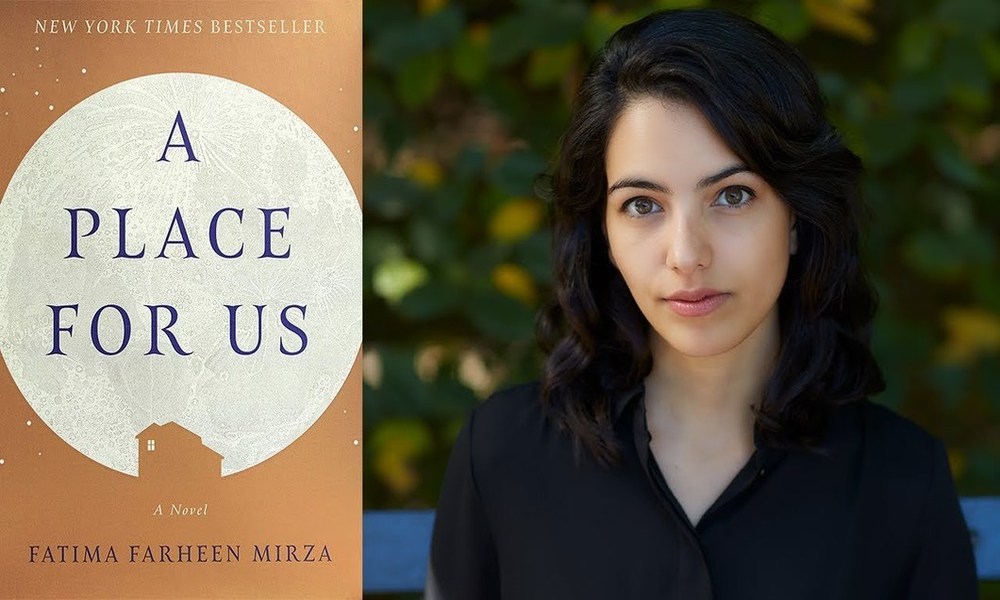“A Place for Us” opens with a family at their eldest daughter’s wedding; they are waiting on the stage, with the bride and groom, for their son to come up for a family picture. The rest of the story is a dénouement of what brought the family to that exact moment in time. Farheen Mirza explores the origin stories of the parents and backtracks through time to illustrate how they became the people they are by the time we enter the story. The book also follows the three children as they grow older and navigate young adulthood as Muslims in California.
Interspersed between the events that unfold within the family is the exploration of themes of immigrant Muslim communities in America, gender dynamics, love, and identity. “A Place for Us” includes multiple stories within a story, in the same way all of us are multiple stories within a story. From beginning to end, I was stunned by how sharply Mirza captures the tragic beauty of families.
View this post on Instagram
While on the outset this book is about the ‘immigrant child’ experience, it brings a new angle to the genre. The immigrant struggle here is not one of the parents having multiple jobs and financial constraints, of first-generation children and burgeoning identity, or interracial love. Instead, Mirza chose to take a deep dive into family structure and dynamics. This story is a deconstruction of dynamics between siblings, between parents and the internal conflict within individuals.
It explores how children from the same family can end up in very different places in life, the gravity of early experiences, and who takes accountability. This idea deeply resonated with me, and she captures it perfectly in the book when Mirza asks the readers directly to reflect:
How were they to know the moments that would define them? It will affect his personality for his whole life, someone is saying to her, and whose fault will it be then?
One of the most prominent themes is parenting and its impact on children. This story asks us to humanize our parents, to see them as complex individuals instead of one-dimensionally revolving around their hard work and sacrifices and asks us to accept the mistakes they make. Another major theme is the internal struggle of ‘good versus bad’ while growing up in a South Asian community in the West. The story confronts its readers about the ambivalent space where our choices contradict one another, and the discomfort many of us feel when we cherry-pick parts of our family traditions, culture, and religion to make our own.
[Read related: Book Review: ‘The Marriage Clock’ — one Woman’s Speedy Search for Happiness]
Mirza’s strength is in her masterful storytelling, which makes for active reading instead of a passive telling of events. Her writing zooms in and out of focus on events in the story, blurring them for some characters and sharpening focus for others. She explores the same event but from different perspectives: What did that argument look like from the perspective of the youngest sister who was watching from the stairs? What did the parents talk about or think, but the children never know of?
Mirza switches between narrators unannounced and we get to know the characters intimately as we begin to recognize their voice. The story goes back and forth in time; we remember the things the characters remember in their memories as if we were in the experiences with them. By allowing her readers a glimpse into the individual lives of each character, Mirza forces them to reflect and reconsider times in their own lives where they might have assumed only one side of the story.
View this post on Instagram
The only thing that left me wanting more is an exploration of the role religion played within the family. Religion, and its impact on immigrant families, is discussed a lot in the story but only at a superficial level. She drifts from her revealing storytelling style when it comes to religion and resorts to the characters directly telling us their religious uncertainties. The damage done by the toxic pressures of religious practice in immigrant communities in the West is a whisper in the narrative with allusions to its impact but is never fully brought out into the open.
[Read related: Book Review: ‘The Jumbies’ — a Trinidadian Fairy Tale]
“A Place for Us” is a portrait of the seams of a family as they pull and push against each other, holding on through time. You might see a little of yourself in it: be it your parents’ struggle to understand or support you; of sibling relationships and rivalries; of how much of your culture and religion you chose to carry forth as adults. The beauty of this story is that it is not an extraordinary journey but about the ordinary moments that shape us, our identities and our futures. As I sat and reflected at the end of the book, one thought came to mind: the opening sentence of Tolstoy’s “Anna Karenina”
Happy families are all alike; every unhappy family is unhappy in its own way.





